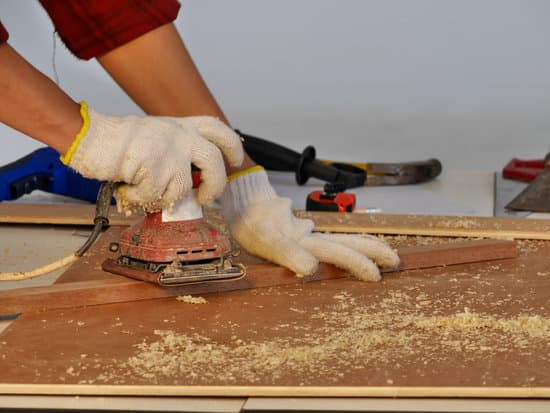Are you looking to renovate your home but don’t have the funds readily available? In this article, we will discuss how to secure a home improvement loan, a financial tool that can help homeowners achieve their renovation goals. Whether you’re looking to update your kitchen, add an extra bedroom, or enhance your outdoor space, a home improvement loan can provide the necessary funding to bring your vision to life.
Securing a home improvement loan is essential for homeowners who want to make significant changes to their property but may not have the cash on hand to cover the costs. By obtaining a loan specifically designed for home renovations, individuals can improve their living spaces, increase the value of their homes, and create a more comfortable and enjoyable environment for themselves and their families.
With careful planning and research, securing a home improvement loan can be a smart financial decision that yields long-term benefits.
Before diving into the loan application process, it is crucial to assess your needs and determine the scope and budget of your upcoming home improvement project. By understanding the full extent of the renovations you plan to undertake and calculating the associated costs, you can better prepare yourself for seeking out a suitable loan option that aligns with your requirements.
In the following sections of this article, we will explore different types of home improvement loans available, offer tips on finding reputable lenders, discuss eligibility requirements, provide guidance on completing the application process, and share strategies for managing loan payments effectively.
Assessing Your Needs
When it comes to embarking on a home improvement project, the first step is to assess your needs and determine the scope and budget of the undertaking. This critical planning phase sets the foundation for a successful renovation or upgrade.
One of the key considerations in this process is to evaluate what areas of your home require improvements and how extensive those renovations will be. Whether you are looking to remodel your kitchen, renovate your bathroom, or add an additional room, understanding the specific goals of your project is essential in determining its scope.
Evaluating Your Budget
Once you have identified the scope of your home improvement project, the next step is to evaluate your budget. Setting a realistic budget is crucial to ensure that you can afford the renovations without overextending yourself financially.
Consider factors such as materials, labor costs, permits, and any unexpected expenses that may arise during the construction process. By having a clear idea of how much you are willing to spend on your project, you can narrow down your options when it comes to securing a home improvement loan.
Consulting With Contractors and Professionals
In some cases, consulting with contractors or design professionals can help in assessing your needs and establishing a realistic budget for your home improvement project. These experts can provide valuable insights into the costs associated with different aspects of the renovation and offer guidance on how to effectively allocate your funds.
By working closely with professionals in the industry, you can gain a better understanding of what is feasible within your budget and make informed decisions about which projects to prioritize. This collaboration can also assist in setting more accurate expectations for financing options as you navigate how to secure a home improvement loan that aligns with your financial capabilities.
Types of Home Improvement Loans
When considering a home improvement project, one of the most important aspects to plan for is how to secure a home improvement loan. There are several options available to homeowners looking to finance their renovations or upgrades. Understanding the different types of home improvement loans can help you choose the best option that suits your needs and financial situation.
Home Equity Loans
One popular option for funding home improvements is through a home equity loan. This type of loan allows homeowners to borrow against the equity they have built up in their property. Home equity loans typically offer lower interest rates than personal loans or credit cards because they are secured by the value of your home. However, it’s essential to remember that if you default on the loan, you could risk losing your home.
Personal Loans
Another alternative for financing home improvements is through a personal loan. Personal loans are unsecured, meaning you don’t need to use your home as collateral. These loans are typically easier and quicker to qualify for compared to a home equity loan since there is no need for an appraisal of your property. Personal loans may have higher interest rates than traditional home equity loans, so it’s crucial to compare offers from different lenders before committing to a loan.
Government Programs
In addition to traditional lending options, there are also government programs available to assist homeowners with financing their home improvement projects. Programs such as FHA Title I Property Improvement Loans or energy-efficient upgrade programs offer low-interest rates and favorable terms for qualified applicants.
These government-backed programs can be an excellent option for homeowners who may not qualify for traditional loans or who are looking for specific incentives related to energy-efficient upgrades. Researching these government programs and determining eligibility requirements can help homeowners secure affordable financing for their renovation plans.
Researching Lenders
When looking for lenders, consider factors such as their reputation, customer reviews, and experience in providing home improvement loans. Reading online reviews and checking with the Better Business Bureau can give you valuable insights into the lender’s reliability and customer service. Additionally, make sure to compare loan terms, interest rates, and fees from multiple lenders to ensure you are getting the best possible deal for your specific needs.
It is also advisable to seek recommendations from friends or family members who have previously secured home improvement loans. They may be able to provide insights into their own experiences with lenders and offer valuable advice on what to look for when comparing loan options. By taking the time to research lenders thoroughly, you can increase your chances of finding a trustworthy financial partner for your home improvement project.
| Researching Lenders Tips | Benefits |
|---|---|
| Assess reputation and customer reviews | Ensure reliability and good customer service |
| Compare loan terms, interest rates, and fees | Secure the best possible deal |
| Seek recommendations from friends or family | Gain insights from personal experiences |
Eligibility Requirements
When exploring how to secure a home improvement loan, one crucial aspect to consider is understanding the eligibility requirements that lenders will use to approve your application. Lenders typically look at factors such as credit score, income level, employment history, and debt-to-income ratio. Having a good credit score is important as it demonstrates your ability to manage debt responsibly. A higher score may also increase your chances of approval and help you secure more favorable loan terms.
In addition to credit score, lenders will also evaluate your income level to ensure that you have the financial means to repay the loan. They will want to see stable employment history and sufficient income to cover your monthly loan payments along with other expenses.
Your debt-to-income ratio, which compares your monthly debt payments to your gross monthly income, is another key factor in determining eligibility. Lenders prefer a lower ratio as it indicates less financial strain on your budget.
Another important aspect of eligibility requirements for home improvement loans is the type of property being renovated. Some lenders may have specific criteria regarding the condition or value of the property. For example, they may require an appraisal or inspection to assess the property’s value and potential for equity growth. Understanding these lender requirements can help you prepare a strong application and increase your chances of securing the funding you need for your home improvement project.
| Eligibility Factor | Importance |
|---|---|
| Credit Score | Demonstrates ability to manage debt responsibly |
| Income Level | Ensures financial means to repay the loan |
| Debt-to-Income Ratio | Indicates financial strain on budget |
Gathering Documentation
When applying for a home improvement loan, it is essential to gather all the necessary documentation to increase your chances of approval. Lenders require certain documents to verify your income, credit history, and overall financial stability. Here is a list of the key documents you will need to prepare before applying for a home improvement loan:
- Proof of Income: Lenders typically require recent pay stubs, W-2 forms, or tax returns to confirm your income level and ensure that you have the means to repay the loan.
- Credit History: Your credit score plays a significant role in determining your eligibility for a home improvement loan. Be prepared to provide copies of your credit report and score.
- Property Information: Documents related to your property such as deeds, mortgage statements, and property appraisals may be required by lenders before approving your loan.
- Identification: A valid form of identification such as a driver’s license or passport is essential when applying for any type of loan.
By having these documents ready and organized, you can streamline the application process and demonstrate your readiness to take on a home improvement project. Additionally, having all the necessary paperwork in order can help expedite the approval process and get you one step closer to securing the financing you need.
Remember that each lender may have specific requirements regarding documentation, so it’s important to check with them ahead of time to ensure you have everything they need. Being proactive in gathering these documents shows lenders that you are serious about obtaining a home improvement loan and are prepared to handle the financial responsibilities that come with it.
With thorough preparation and attention to detail, you can make the application process smoother and increase your chances of securing the funding you need for your project.
Applying for a Loan
When it comes to embarking on a home improvement project, securing a home improvement loan can be a crucial step in making your renovation dreams a reality. Whether you’re looking to upgrade your kitchen, add an extra bedroom, or make necessary repairs to your home, a loan specifically tailored for home improvements can provide the financial assistance needed.
Here is a step-by-step guide on how to apply for a home improvement loan and what you can expect throughout the process:
- Research Loan Options: Before applying for a home improvement loan, it’s essential to explore different lenders and loan products available in the market. Consider factors such as interest rates, repayment terms, and fees associated with each loan option.
- Determine Loan Amount: Calculate the total cost of your home improvement project and assess how much funding you will need to cover expenses. Make sure to factor in any additional costs that may arise during the renovation process.
- Check Eligibility Requirements: Review the eligibility criteria set by lenders for acquiring a home improvement loan. This typically includes factors such as credit score, income level, and debt-to-income ratio.
Once you have conducted thorough research on different loan options and assessed your financial needs, it’s time to begin the application process. Keep in mind that applying for a home improvement loan is similar to applying for any other type of personal loan – you will need to provide relevant documents to support your application and undergo a credit check. Here are some key steps to follow when applying for a home improvement loan:
- Fill out the Loan Application: Start by completing the loan application form provided by your chosen lender. Be prepared to provide details about yourself, your income, employment status, and the purpose of the loan (i.e. home improvements).
- Submit Required Documents: Gather necessary documentation required by the lender, including proof of income (pay stubs or tax returns), bank statements, identification documents, and information about your existing debts.
- Await Approval Decision: After submitting your application and supporting documents, wait for the lender to review your application and make an approval decision. This process may take several days depending on the lender’s review process.
By following these steps diligently and being prepared with all necessary documentation, you can increase your chances of securing a home improvement loan successfully. Remember that every lender has its own set of requirements and processes when it comes to approving loans – so take the time to research potential lenders thoroughly before submitting your application.
Securing the Loan
Securing a home improvement loan can be a crucial step in turning your renovation dreams into reality. Once you have been approved for a loan, the next steps involve finalizing the agreement and receiving the funds for your project. It is important to understand the process of securing the loan to ensure that everything goes smoothly and according to plan.
After you have been approved for a home improvement loan, you will need to review and sign the loan agreement provided by the lender. This document outlines the terms of the loan, including the interest rate, repayment schedule, any associated fees, and other important details. It is essential to carefully read through the agreement and ask any questions you may have before signing to ensure that you fully understand your obligations as a borrower.
Once you have signed the loan agreement, the lender will typically disburse the funds for your home improvement project. The timing of when you receive these funds can vary depending on the lender and their processes.
Some lenders may deposit the funds directly into your bank account, while others may provide a check or transfer the money to a designated contractor or supplier. Be sure to clarify with your lender how and when you can expect to receive the funds so that you can plan accordingly for your renovation project.
Securing a home improvement loan is just one part of the process of funding your renovation project. By understanding what happens after approval, including signing the loan agreement and disbursing funds for your project, you can better navigate this phase of securing financing for your home improvements. Remember to stay organized, communicate clearly with your lender, and follow through on all necessary steps to ensure a successful outcome for your renovation project.
Tips for Repaying the Loan
Securing a home improvement loan is a significant step towards transforming your living space and increasing the value of your property. However, it is essential to also consider the repayment aspect of the loan to ensure financial stability moving forward. By following these tips for repaying the loan, you can effectively manage your payments and avoid defaulting on your obligations.
One key strategy for managing your loan payments is to create a detailed budget that includes your monthly loan payment as well as other expenses. By prioritizing your loan payment and incorporating it into your financial plan, you can ensure that you always have the necessary funds available when the payment is due. Additionally, setting up automatic payments or reminders can help you stay on top of your repayment schedule and avoid missing any deadlines.
Another important tip for repaying the loan is to explore any potential opportunities for refinancing or restructuring the terms of your loan if necessary. If you encounter financial difficulties or unexpected circumstances that impact your ability to make payments, it is crucial to communicate with your lender and explore options for modifying the terms of your loan. This proactive approach can help you avoid defaulting on the loan and damaging your credit score in the long run.
In conclusion, by carefully planning and managing your loan payments, you can successfully repay a home improvement loan and enjoy the benefits of a renovated living space. Remember to stay organized, prioritize your payments, and communicate openly with your lender if needed. With proper financial management, you can achieve your home improvement goals while maintaining a healthy financial outlook.
Frequently Asked Questions
What Credit Score Do You Need for a Home Improvement Loan?
The credit score needed for a home improvement loan can vary depending on the lender. Generally, a credit score of 620 or higher is considered good enough to qualify for most home improvement loans. A higher credit score may result in better loan terms and interest rates.
Can I Get a Loan to Improve My Home?
Yes, it is possible to get a loan specifically for home improvements. Many lenders offer different types of loans tailored to home renovation projects, such as personal loans, home equity loans, or home equity lines of credit (HELOCs). These loans can help homeowners fund their renovation projects without using their savings.
Are Renovation Loans a Good Idea?
Renovation loans can be a good idea for homeowners looking to improve their property without draining their savings. These loans provide the necessary funds to complete renovation projects and increase the value of the home. However, it’s essential to carefully consider the costs involved and ensure that the loan terms are manageable before proceeding with a renovation loan.

I’m thrilled to have you here as a part of the Remodeling Top community. This is where my journey as an architect and remodeling enthusiast intersects with your passion for transforming houses into dream homes.





